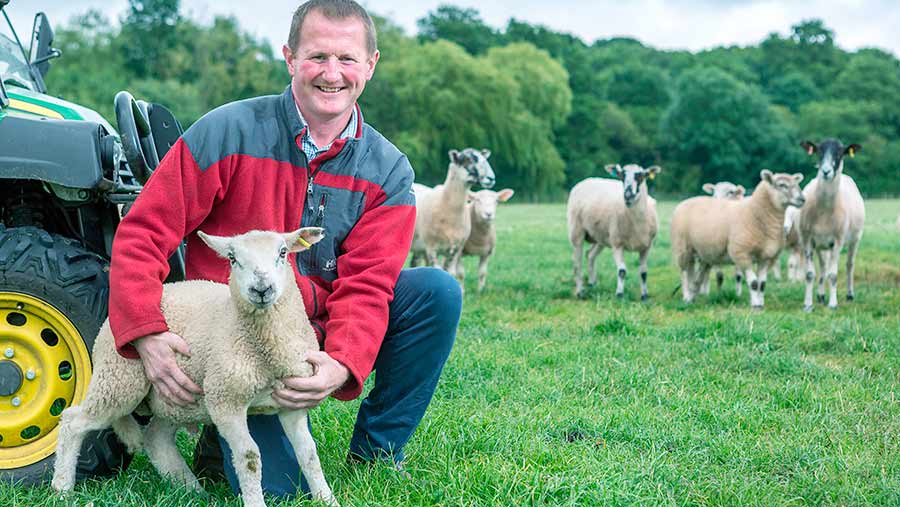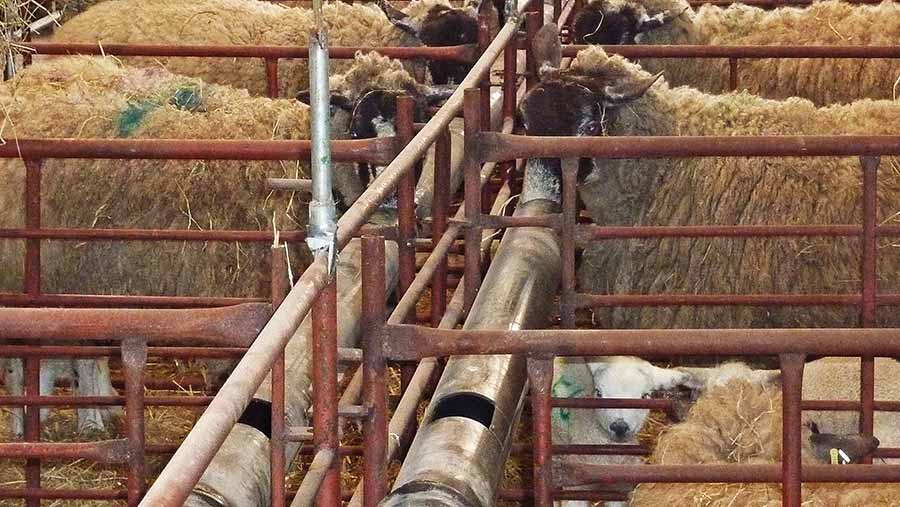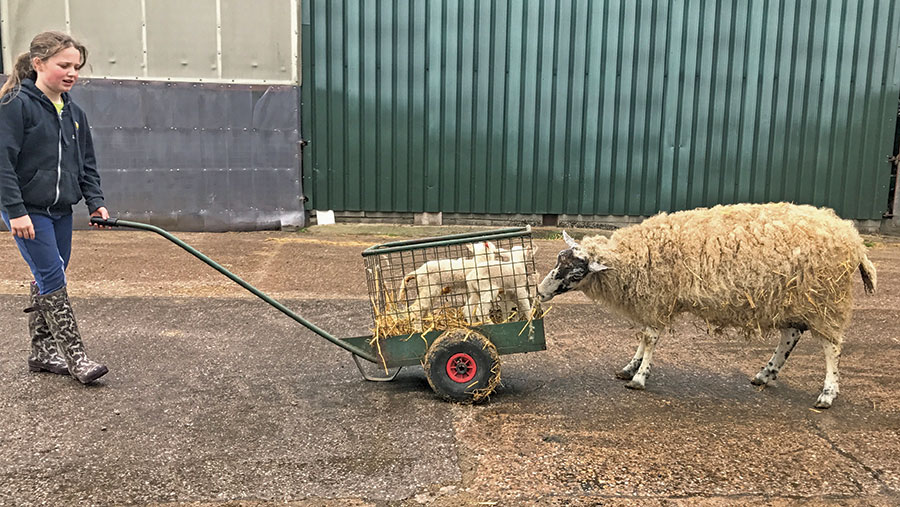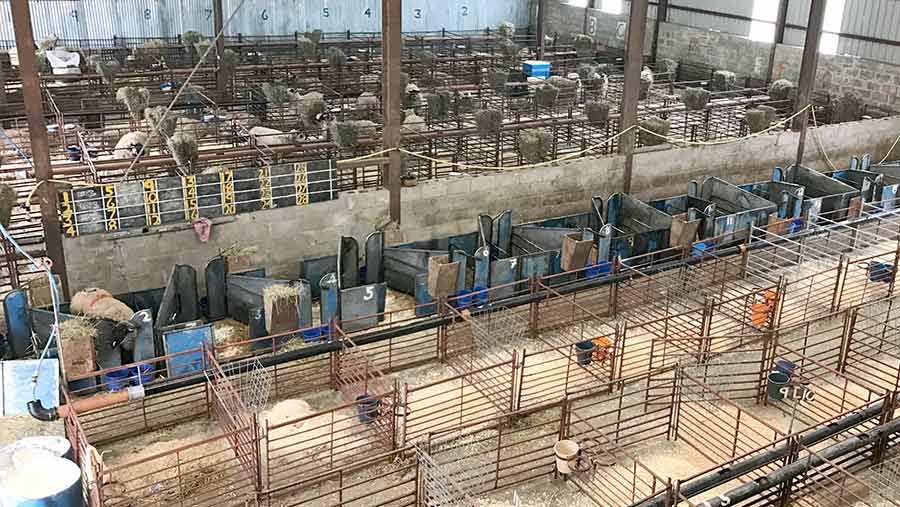4 ways a Worcs farmer has made indoor lambing easier
 Sam Jones © Richard Stanton
Sam Jones © Richard Stanton A decade ago, Sam Jones from Brookhouse Farm, Redditch, Worcestershire, used to run 2,000 North of England Mules alongside his arable enterprise before he made the decision to cut his numbers.
Now at 1,150 ewes, the flock is healthier, with scanning and rearing rates up 25-30% to 212% and 190% respectively, and vet bills down 30%.
High standards in the lambing shed are vital for the flock, which lambs inside from 18 March for just 21 days.
See also: ‘Matchmaking’ service connects farmers with lambing students
We find out how he’s making big strides in performance and labour efficiencies.
1. Using plastic piping to deliver water to individual pens to cut labour

Drinking troughs have cut time spent watering the ewes by 50%.
Plastic piping runs along each row. Wooden blocks are used in sheds with uneven floors or slopes to keep the piping level so all sheep get the same amount of water.
Rectangular holes have been cut in the pipes measuring 20x12cm. Sheep all get access to 1m of pipe.
This works perfectly for his Mules although Mr Jones says bigger holes will need cutting for larger sheep such as Texel crosses.
2. Moving lambs around using trolleys and a golf buggy

Mr Jones uses a trolley to take lambs to the nursery pen and a golf buggy to take them out to the field. The trolley and golf buggy are quiet and lambs are heard bleating better.
This means the sheep follow the lambs better, making the job of moving ewes and lambs easy.
3. Streamlining jobs by labelling

Four veterinary students help the Jones family each year, gaining valuable experience at the farm. Labelling each row alphabetically helps focus labour and streamline communication.
“We all know that triplets are on a certain line for example and singles are on another line for fostering.”
4. Working in shifts
Mr Jones fosters a student-led approach to teaching staff.
“It’s much easier for a student to teach a student the ways of our system rather than me explaining to them all in 10 minutes and then disappearing to do another job.”
Each student works no more than nine-hour shifts and more typically eight hours. They also have a four-hour overlap between shifts so they can pass any problems such as feeding issues or spare lambs on to the next student.
Farm Facts
Brookhouse Farm, Redditch, Worcestershire
- 202ha of which 80ha rented
- 53ha arable 20ha grass leys 129ha permanent grass leys
- 1,150 North of England Mules
- Growing barley, wheat and oats
- Supplying Farmers Fresh in Kenilworth
- Lambs sent at 43-45kg liveweight (21kg carcass)
Lambing shed Facts
- 10 different sheds housing 115-140 ewes
- Sheds have up to 14 pens in a row
- Each pen is 2m-2.2m square per ewe
- Ewes and lambs have 24 hours
- Lambs EID tagged, spray marked, tailed and castrated within first 24 hours
